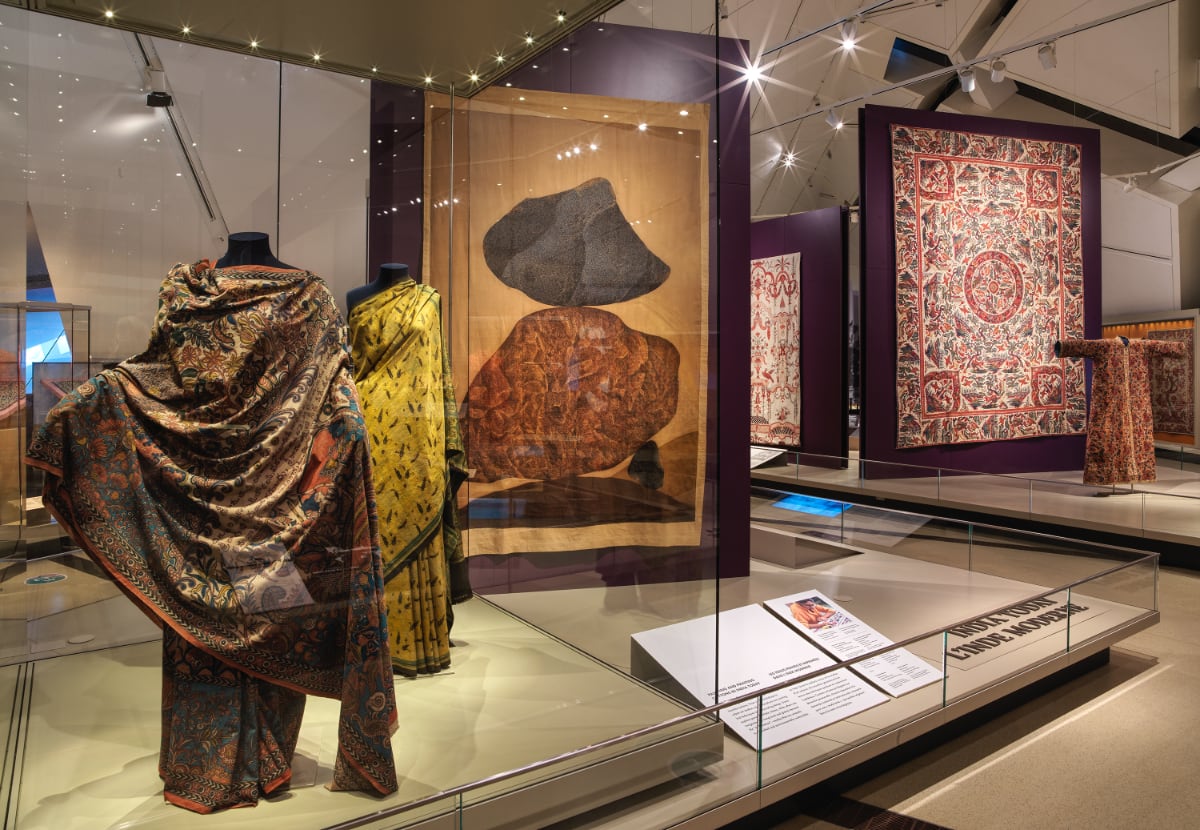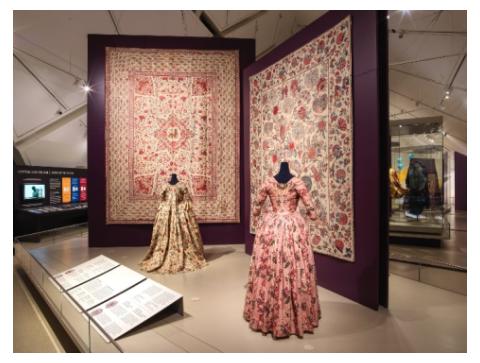
Modernization
Learn more about government’s intention to modernize the museum to protect our historic holdings and provide better access to our collections.

By Laura Goldstein
Photos: Paul Eekhoff and
Sarah Fee

Very often, something in childhood sparks our interest triggering a path as an adult that may unconsciously have chosen us. “When we were pretty young my mom, who made all our clothes and was a big crafter, taught us to knit, crochet, macramé and embroider. The ‘70s after all was the DIY era,” reminisces Dr. Sarah Fee, Senior Curator of Global Fashion & Textiles at the Royal Ontario Museum (ROM) in Toronto. “It’s just in our family blood,” she acknowledges.
Sarah’s hands-on fascination with textile making was transformative after trips to Madagascar, East Africa and India where she learned spinning, natural dying, weaving and woodblock printing from families that have been producing cotton chintz fabrics for generations. “As a research topic, it was my window onto the world, and immediately lets you in to people’s lives,” she says. “I still have my hand spindle at home to make yarn which I find very meditative,” she laughs.
Featuring 80 stunning garments, decorative arts and soft furnishings in vivid designs and colours, this extraordinary Exhibition overseen by Dr. Fee, reveals their enduring influence on fashion, commerce and politics. Travelling from the ROM in Toronto, Global Threads: The Art and Fashion of Indian Chintz arrives at the Royal BC Museum, Victoria, March 28th to September 28th, 2025.
South Asian textiles have had an inextricable impact on history, politics and global economies including the slave trade. “For generations, textiles were written out of history,” Sarah asserts. “We’ve always learned about the triangular trade of sugar, rum and slaves and of course Indonesia for all the spices. But in fact, there was a fourth side to it which was textiles. Slaves were taken from Africa to produce the cotton used to make the fabrics.”
Chintz derives from the Hindu word chint, meaning painted or spotted and refers to cotton fabrics woodblock printed or hand-painted with flowers, birds and exotic motifs. You may be familiar with the colour indigo made by churning the leaves of the indigofera plant in water until a blue froth appears. However, red, derived from madder plants was associated with life, fertility and fire and was the most desired colour in South Asian fabrics.

“Chintz fabrics drove the global economy and I guess that’s what this Exhibition is all about,” Sarah explains. “The discovery and importing of Indian cotton by the East India Company was such a threat to the textile industries in England and France from 1686 to 1774 that their governments forbade even wearing it, punishing people (royalty exempt) with fines and even imprisonment! It was a revolutionary new fashion especially for women to wear lighter fabrics, patterns and colours instead of the heavy woolins they were accustomed to. And, cotton was something the middle class could afford. (hence the expression ‘chintzy’ still a colloquialism in the public domain today to denote cheap.) It was the weavers that rose up and actually burned South Asian textiles in defiance, but they couldn’t stop the imports. By the 19th century, Indian chintz was already being industrialized and so, by the time, for example, those large floral prints worn by Tahitian women were painted by Paul Gauguin, the technology was already in European hands,” Sarah explains.
Today, according to the India Brand Equity Foundation and the Government Ministry of Commerce, the value of India’s global cotton exports reached $6.78 billion US from 2023-2024, and is projected to far exceed that number over 2025-2026.
Fashion trends are cyclical and with the recent emphasis on sustainable fabrics and small-batch production, there’s been a tremendous renaissance for cotton chintz. “Charllotte Kwan of Maiwa on Granville Island, Vancouver has been a big supporter of this Exhibition and she has loaned all the dye samples that are in the show,” says Sarah. “There are some dyes that are very rare and no longer used and she had them. Also, what makes Charllotte exceptional is that not only has she developed techniques with village artisans to apply dyes to beautiful silk fabrics, which is very complicated, but she is committed to working with those same families in India to produce clothing and accessories for over 35 years.”
As part of the By Design: A Journey Through Arts and Culture Lecture Series, Dr Sarah Fee will present How India’s Cotton Cloth Forever Changed Fashion and the World, Friday, March 28th, 7:00 p.m. in the Conference Hall, Royal BC Museum.